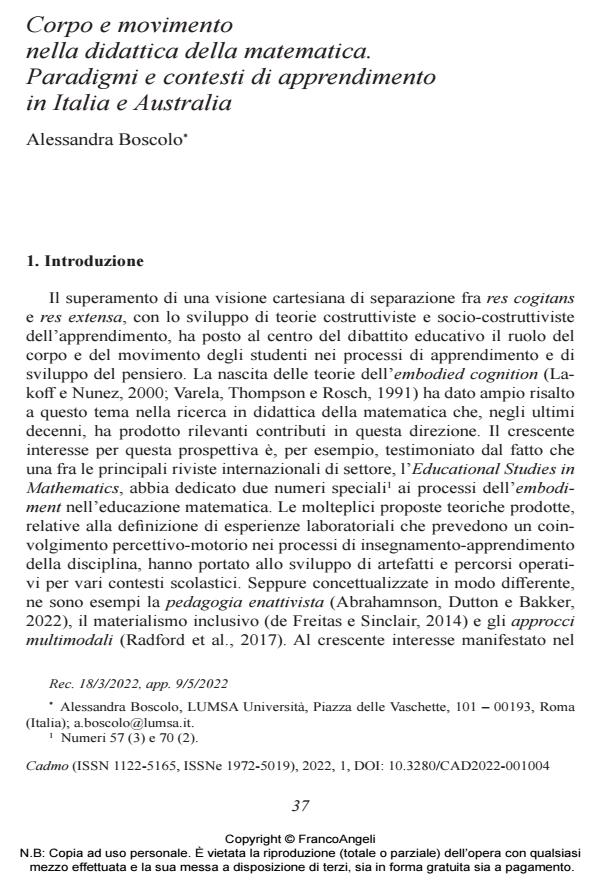Body and movement in Mathematics Education. Par- adigms and contexts of learning in Italy and Australia
Journal title CADMO
Author/s Alessandra Boscolo
Publishing Year 2022 Issue 2022/1
Language Italian Pages 26 P. 37-62 File size 268 KB
DOI 10.3280/CAD2022-001004
DOI is like a bar code for intellectual property: to have more infomation
click here
Below, you can see the article first page
If you want to buy this article in PDF format, you can do it, following the instructions to buy download credits

FrancoAngeli is member of Publishers International Linking Association, Inc (PILA), a not-for-profit association which run the CrossRef service enabling links to and from online scholarly content.
The implementation of educational innovations and research findings is significantly influenced by cultural and contextual factors. In this paper, we will present a study carried out in Italy and Australia on the introduction at school of Mathematics active, bodily experience learning activities. Com paring two different teaching cultures, we revealed the presence of specific contextual features and cross-cultural characteristics, which can lead to a better understanding of those activities and their possible implementation. Thanks to indepth interviews of a number of experts in Mathematics edu- cation in both countries, it was possible to observe emerging differences in how those activities are conceived and could be declined in school practice in the two different contexts. Some cultural dissimilarities stemming from the Mathematics and Mathematics education cultural traditions of the two states under consideration, which also figured in their educational policies, are also discussed.
Keywords: laboratorio di matematica, enactive learning, hands-on math- ematics, implementation, embodied cognition.
Alessandra Boscolo, Corpo e movimento nella didattica della matematica. Paradigmi e contesti di apprendimento in Italia e Australia in "CADMO" 1/2022, pp 37-62, DOI: 10.3280/CAD2022-001004